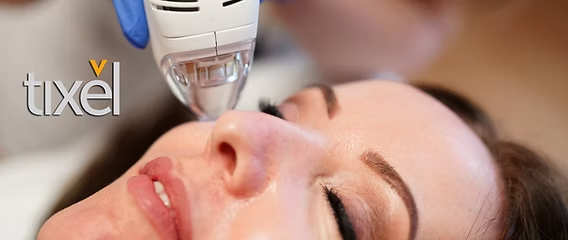Tixel vs. Traditional Blepharoplasty: Which Eyelid Treatment Is Right for You?
- Tight Clinic Toronto

- Mar 15
- 2 min read
As we age, the skin around our eyes can begin to droop and sag, leading to a tired or aged appearance. Both traditional blepharoplasty (eyelid surgery) and Tixel offer solutions for rejuvenating the eyes, but they differ significantly in their approach, recovery, and results. This blog will explore the key differences between these two treatments to help you determine which option is best suited for your individual needs.

Traditional Blepharoplasty: The Surgical Approach
Traditional blepharoplasty is a surgical procedure designed to correct drooping upper eyelids and lower eyelids. Generally, people look for Upper Eyelid Blepharoplasty Toronto experts to get the correct drooping. Also, you can have the right lower eyelid blepharoplasty Toronto experts remove excess skin and bags
This procedure involves making incisions to remove excess skin, muscle, and sometimes fat. It can be performed on the upper eyelids, lower eyelids, or both. An experienced surgeon skillfully adjusts the tissues around the eyes to provide a more youthful look.
Tixel: The Non-Surgical Alternative
Tixel represents a revolutionary approach to eyelid rejuvenation, offering a non-surgical blepharoplasty Toronto option. This treatment utilizes thermo-mechanical ablation (TMA) technology, which delivers direct heat to the skin via a titanium tip. This process stimulates collagen production and tightens the skin. Unlike lasers, Tixel uses heat energy instead of light energy, allowing it to be safely used around the eyes and even on the eyelids right up to the lash line without the need for protective eyewear.

Key Differences and Considerations
When deciding between traditional blepharoplasty and Tixel, consider the following:
Procedure Type: Traditional blepharoplasty is an incision-based surgical procedure, while Tixel is a non-invasive thermal treatment.
Downtime: Traditional blepharoplasty usually involves a longer recovery period with more downtime compared to Tixel, which allows patients to resume daily activities almost immediately.
Scarring: Traditional blepharoplasty may result in visible scarring, whereas Tixel leaves no scars.
Results: Traditional blepharoplasty provides more dramatic and immediate results, while Tixel offers gradual improvements over time.
Risk Factors: There is a higher risk of complications with traditional surgery compared to Tixel, which has minimal risks and is safe for sensitive areas.
Skin Types: Traditional blepharoplasty may require careful consideration for different skin types, while Tixel is safe for all skin tones.
Number of Sessions: Traditional blepharoplasty typically involves a single procedure, whereas Tixel usually requires multiple sessions (2-4) for optimal results.
Final Thoughts
Both Tixel and traditional blepharoplasty offer effective solutions for eyelid rejuvenation. Tixel is gentle enough for the delicate eye area, even for those with sensitive skin. By understanding the differences in their approaches, recovery times, and expected results, you can make an informed decision about which treatment is right for you.
Ready to explore non-surgical blepharoplasty Toronto options with Tixel? Contact Tight Clinic today to schedule a consultation and discover how we can help you achieve a more youthful and refreshed appearance!








Comments